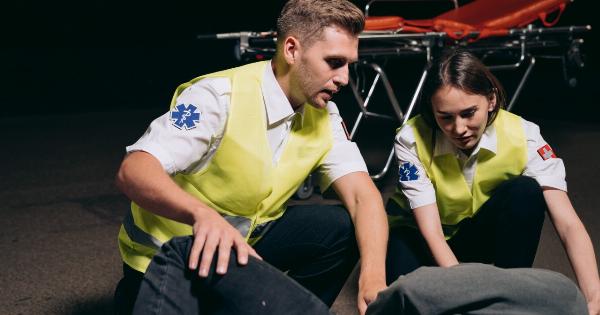Accidents happen, and sometimes they can result in dental trauma. Dental trauma refers to any injury or damage incurred to the teeth or surrounding structures due to an impact, fall, or other traumatic event.
It can range from minor chips or cracks to more severe injuries like avulsed (knocked-out) teeth or jaw fractures. Knowing how to promptly and effectively deal with dental trauma can make a significant difference in saving your teeth and preserving oral health. Here are some important steps to take in case of dental trauma:.
1. Assess the Situation
The first step in dealing with dental trauma is to assess the situation. Determine the severity and type of injury. Take a moment to carefully evaluate the damage, noting any bleeding, pain, or visible fractures.
This initial assessment will help you understand the urgency of the situation and inform your subsequent actions.
2. Stop Bleeding
If there is bleeding, the next step is to control and stop it. Rinse your mouth with warm water to remove any blood and debris.
Place a clean gauze pad or a sterile cotton ball over the bleeding area and apply gentle pressure for about 10-15 minutes, or until the bleeding subsides. If the bleeding is severe and does not stop, seek immediate professional help.
3. Preserve Avulsed (Knocked-Out) Teeth
If a tooth has been completely knocked out, it is crucial to act quickly to increase the chances of successful re-implantation. Hold the tooth by the crown (upper part) and rinse it gently with milk or saline solution.
Avoid touching the root to preserve its delicate tissues. If possible, carefully reinsert the tooth into the socket, ensuring it faces the correct way. Apply slight pressure to hold it in place.
If re-implantation is not feasible, store the tooth in a container of milk or saliva to keep it moist and seek professional dental care immediately.
4. Handle Fractured or Broken Teeth
If a tooth is fractured or broken, rinse your mouth with warm water to clean the area. Save any broken tooth fragments and, if possible, try to gently reposition them back into their original positions.
Use a cold compress or ice pack on the outside of the mouth or cheek to reduce swelling and alleviate pain. Contact your dentist as soon as possible for appropriate treatment options.
5. Manage Dislodged Teeth
If a tooth has been pushed out of position but is still attached to the socket, use light finger pressure to try to guide it back into its correct alignment.
Bite down gently on a clean cloth or moistened tea bag to hold the tooth in place and reduce movement. Seek dental attention promptly to prevent further complications.
6. Alleviate Pain and Swelling
Pain and swelling are common after dental trauma. Over-the-counter pain relievers, such as acetaminophen or ibuprofen, can help alleviate discomfort. Applying a cold pack to the affected area can also reduce swelling and provide temporary relief.
However, it is essential to seek professional dental care to address the underlying cause and prevent potential complications.
7. Protect Fractured Teeth
If a tooth is fractured but still intact, it is important to protect it until you can see a dentist. Avoid chewing on the affected side and refrain from consuming hard, crunchy, or sticky foods.
Opt for a soft diet to minimize the risk of further damage or irritation to the tooth. Your dentist will recommend appropriate treatment based on the extent and location of the fracture.
8. Seek Emergency Dental Care
Dental trauma requires prompt attention from a dental professional, even if the injury appears minor. Contact your dentist immediately and explain the situation.
They can provide guidance over the phone and schedule an emergency appointment to assess the damage and initiate appropriate treatment.
9. Follow Post-Trauma Instructions
After receiving treatment for dental trauma, it is important to follow any post-trauma instructions provided by your dentist.
These may include taking prescribed medications, using ice packs for swelling, following specific dietary restrictions, or avoiding certain activities that may further aggravate the injury. Adhering to these instructions will aid in the healing process and prevent complications.
10. Prevention is Key
While accidents cannot always be avoided, taking preventive measures can significantly reduce the risk of dental trauma.
Wearing mouthguards during sports activities, avoiding chewing on hard objects like ice or popcorn kernels, and maintaining good oral hygiene are essential for preventing dental injuries. Regular dental check-ups allow your dentist to identify any potential risks and provide appropriate preventive measures.
























